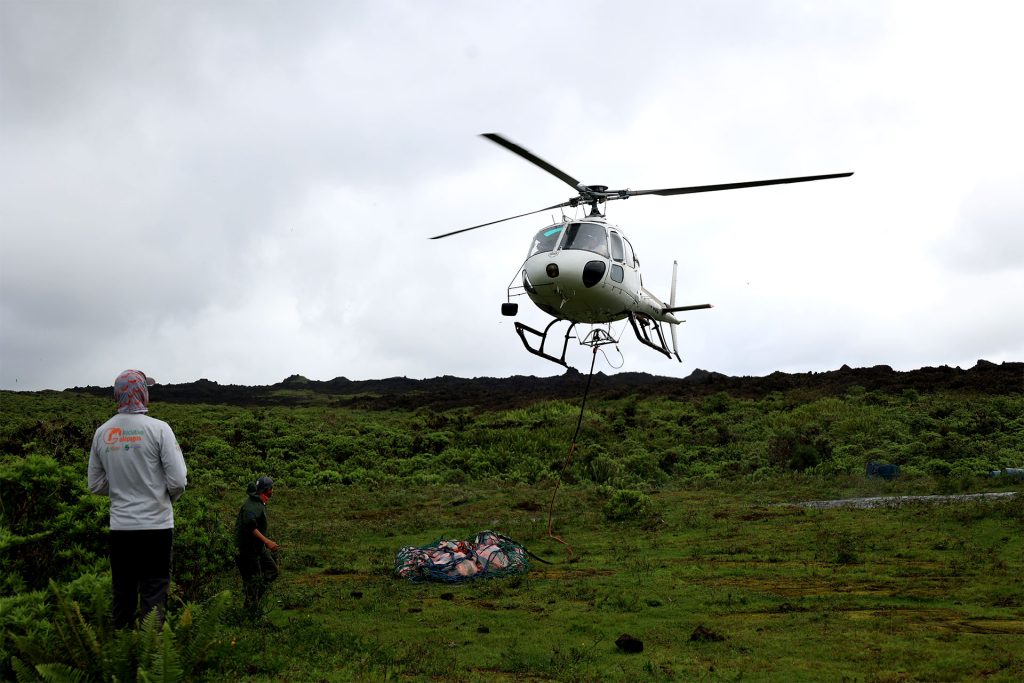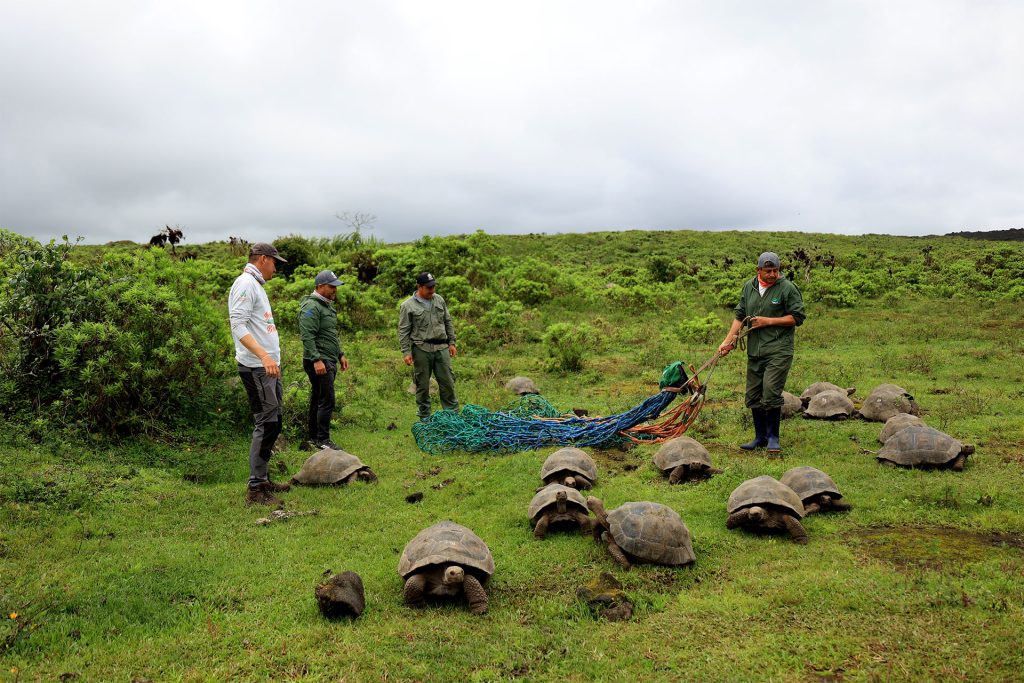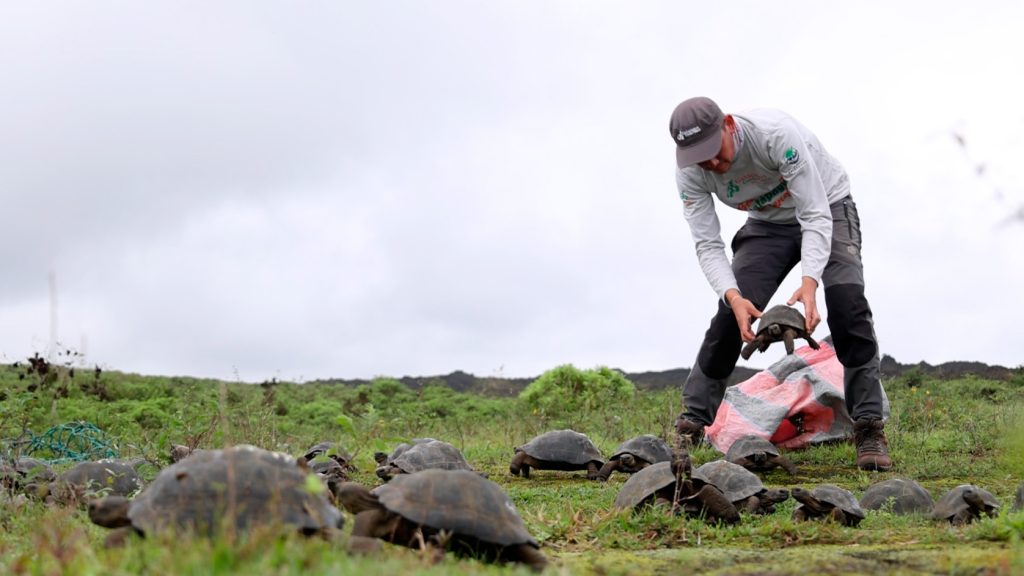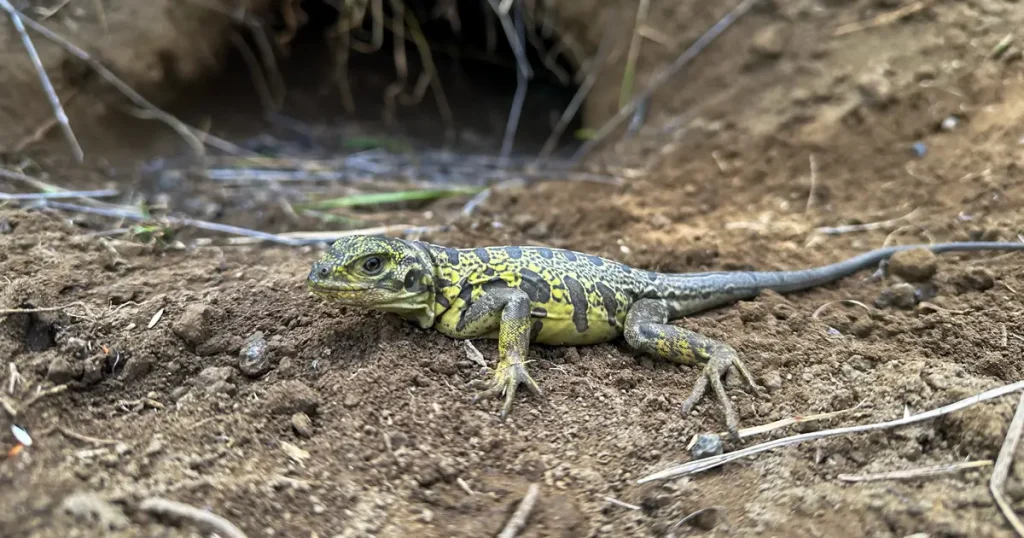The Remarkable Return of 136 Galápagos Tortoises to Their Natural Habitat

The Galapagos National Park Directorate, in partnership with Galapagos Conservancy, successfully repatriated 136 juvenile tortoises to the Cinco Cerros area on Isabela Island’s Cerro Azul volcano. These brave tortoises, aged between 5 and 9 years, were returned to their natural habitat, the only place where populations from Sierra Negra and Cerro Azul volcanoes coexist.
From the Breeding Center to Their Natural State
Their journey begins at the Arnaldo Tupiza Chamaidan Breeding and Rearing Center in Captivity on Isabela Island, where dedicated park rangers ensured their well-being and development from birth.
These tortoises have reached optimal conditions to take a crucial step in the exciting journey back to their home, where they can enjoy a life in their natural state. After being quarantined, dewormed, analyzed for health, and microchip marked for identification, 136 tortoises were transported via helicopter to their destination in the picturesque south of Isabela Island under strict safety standards.
Aerial Support in Conservation
The financial support provided by passionate advocates of conservation made it possible to safely move these tortoises via helicopter, which is a crucial tool that has enhanced our transport capacity for this species. Without the helicopter support, the only alternative would be to transport them by sea and then carry them on shoulders across several kilometers of lava fields and challenging terrain. This would be an immensely challenging task that would take a long time and multiple expeditions. The contributions, like yours, that funded this means of transportation have played a crucial role in overcoming these challenges, ensuring the ongoing success of our conservation initiative.
The repatriation of tortoises to Isabela Island plays a crucial part in restoring the ecological balance. Tortoises are primary herbivores that actively participate in shaping the landscape and dispersing seeds. These are crucial factors in maintaining ecosystem stability. Dr. Jorge Carrión, our Director of Conservation, emphasized that “we need to remain vigilant because this species is under threat from invasive species. Therefore, we will continue to closely monitor the situation”.

Securing the Future through Successful Repatriation of Juvenile Tortoises
The successful repatriation of this new group of 136 juvenile turtles to their home in Isabela marks a crucial milestone in our conservation mission in Galápagos. The collaboration between the Galápagos National Park Directorate and Galápagos Conservancy, supported by our donors’ generosity, has played a crucial role in overcoming logistical challenges and ensuring the safe transportation of these valuable species by helicopter.
This accomplishment highlights the significance of being vigilant towards any threats to biodiversity. We would like to express our gratitude towards all the passionate supporters of conservation who have actively contributed to this campaign. Your ongoing commitment and financial support are essential in creating a secure and well-balanced future for the giant tortoises, which are endemic species in Galápagos.




